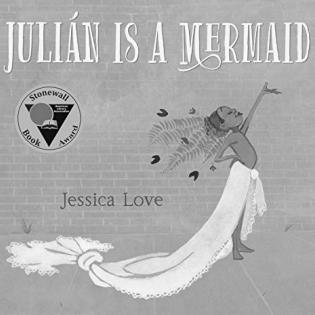Julian Is a Mermaid Literature Guide
In this book, Julian imagines himself becomming a mermaid after he sees some women dressed up beautifully in mermaid costumes. When he gets home, he dresses up as a mermaid, and at first his Abuela seems angry at him. Abuela loves Julian deeply and cares more about him than about what people think is appropriate for boys and girls, and she helps him find a community of inclusion. The simple story of family love shows the value of celebrating self-expression and holding up respect for individuality. Julian is pronounced "Hoo-li-ahn." The book uses some Spanish words, and the characters are portrayed as Afro-Cuban.
Before Reading
Ask: Each one of us is unique. What are some things that make you the same and different from your friends?
Show: Look at the title and picture on the book cover. What do you think this book will be about?
Connect: What are some good things that come from being ourselves instead of trying to fit in?
During Reading
Ask: Why do you think Abuela's face looked stern when she came out of the bath and saw Julian dressed up in her plants and curtains? What does Julian seem to feel when Abuela walks away?
Show: Look at the picture of Abuela dressed up after her bath. Where have you seen the blue and white dress pattern before? What does giving Julian the necklace symbolize?
Connect: Some people have the idea there are things that boys do and look like and other things that girls do and look like. Talk about how you feel about gender roles. Are they helpful? Hurtful?
After Reading
Ask: How would you describe Julian? How would you describe Abuela?
Show: Look at the picture of Julian and his Abuela joining the other people who are dressed up. What do you think that celebration feels like to Julian? What does it mean to celebrate differences?
Connect: Define empathy as putting yourself in someone else's place to understand them. How did Abuela's empathy shift to generosity? Have you ever tried to understand someone by putting yourself in their place? How do you think empathy can shift to generosity?
Activities
- Have you ever wanted to dress up as something else? Draw a picture of yourself dressed up as something or someone you admire. Or, use clothes, fabric, makeup, and art supplies to make a costume.
- Make a chart showing things that are just for boys, things that are just for girls, and things that are for both. If there are any things that are just for boys or just for girls, give a good reason why that is true.
- Make a poster with the message, "Be yourself." Display it to encourage others to express themselves just as they are.
- In the center of the book is a picture of Julian swimming with fish. The picture is jubilant and expresses his fantasy world. Draw yourself immersed in a fantasy that expresses what gives you joy.
- Do some of these activities from Learning to Give that facilitate self-awareness.
- This lesson from Learning to Give gently explores gender identity and LGBTQ+ awareness.
